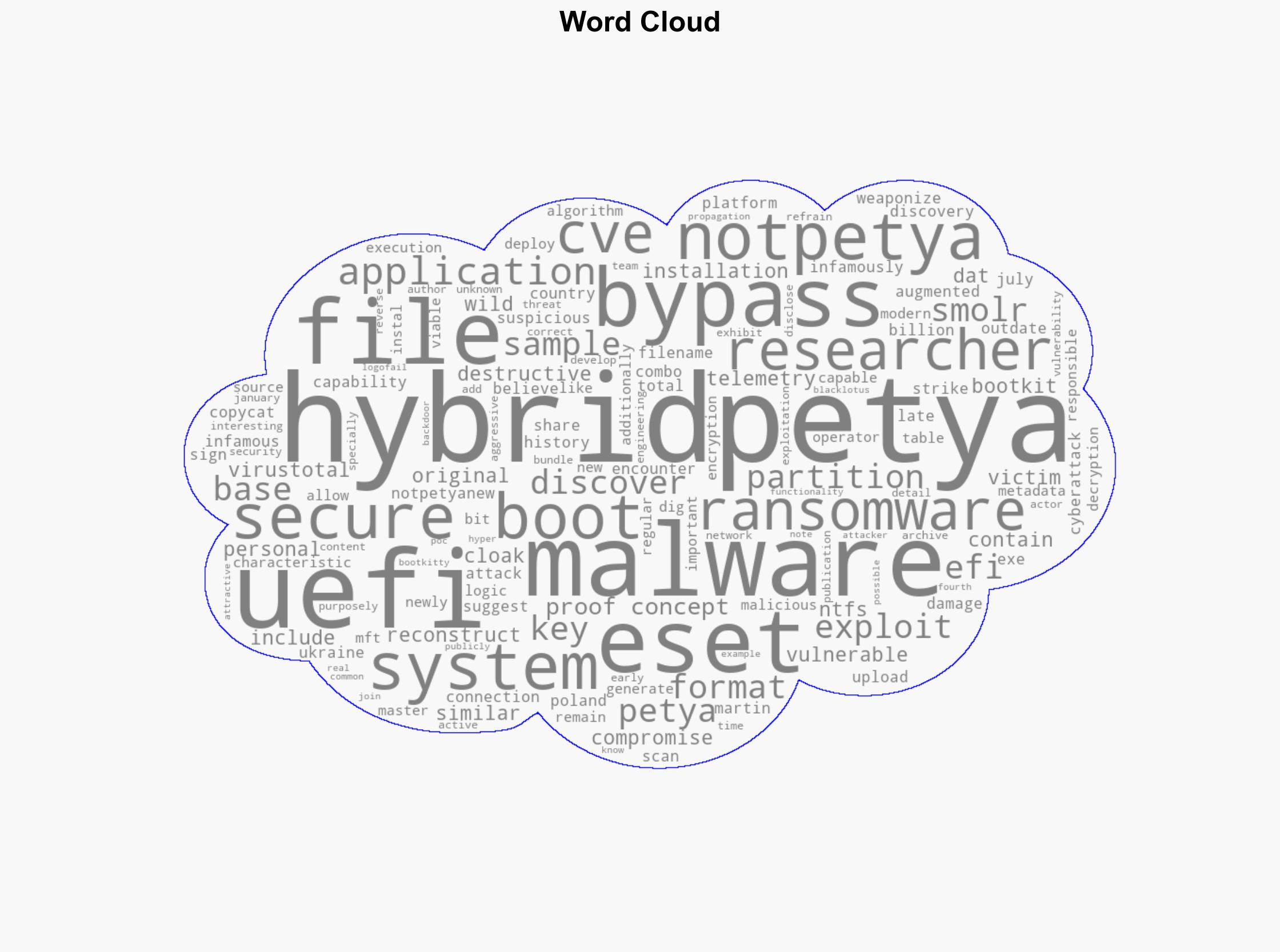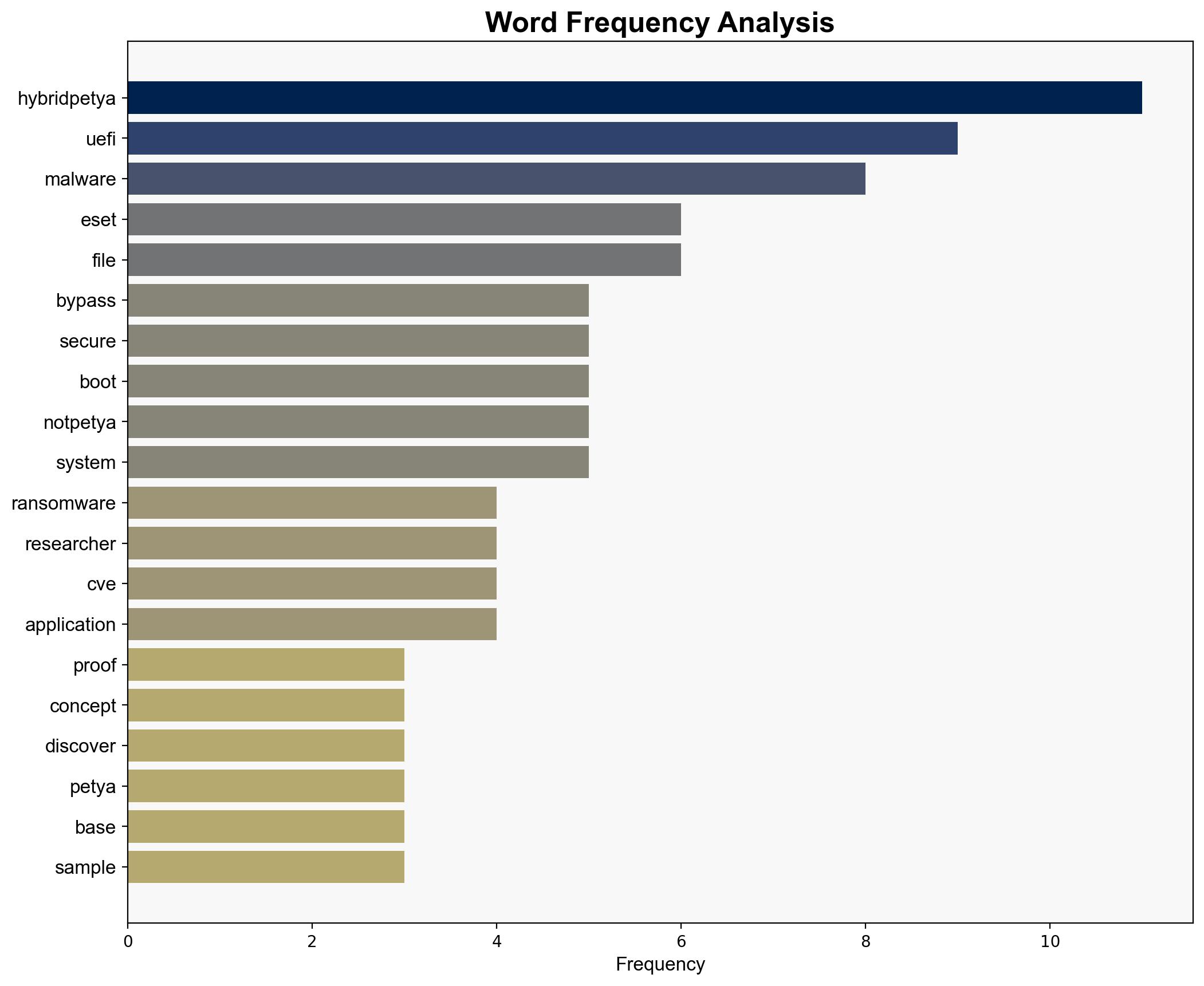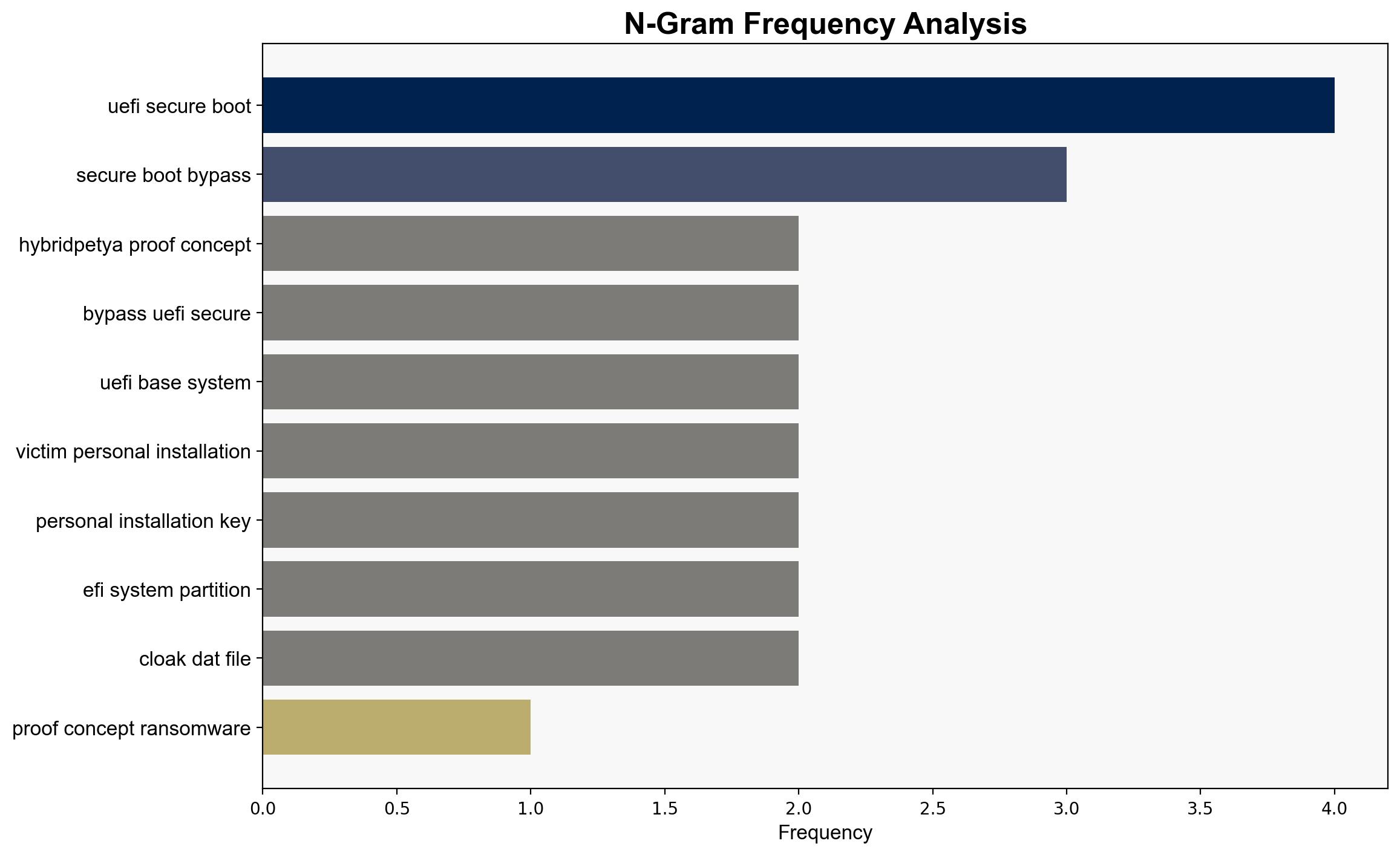HybridPetya Proof-of-concept ransomware can bypass UEFI Secure Boot – Help Net Security
Published on: 2025-09-12
Intelligence Report: HybridPetya Proof-of-concept ransomware can bypass UEFI Secure Boot – Help Net Security
1. BLUF (Bottom Line Up Front)
The discovery of HybridPetya, a ransomware capable of bypassing UEFI Secure Boot, represents a significant cybersecurity threat with potential for widespread impact. The most supported hypothesis is that HybridPetya is a sophisticated evolution of previous ransomware, designed to exploit specific vulnerabilities in UEFI systems. Confidence level: High. Recommended action: Immediate review and patching of UEFI vulnerabilities, increased monitoring of network traffic for signs of HybridPetya activity, and collaboration with cybersecurity entities to develop countermeasures.
2. Competing Hypotheses
1. **Hypothesis A**: HybridPetya is a direct evolution of the Petya/NotPetya ransomware, developed by the same or a related group, leveraging new vulnerabilities to enhance its impact.
2. **Hypothesis B**: HybridPetya is an independent development by a new threat actor, using the notoriety of Petya/NotPetya as a cover to mask its origins and intentions.
Using Analysis of Competing Hypotheses (ACH), Hypothesis A is better supported due to the similarities in naming conventions, execution logic, and network propagation methods. The presence of similar filenames and encryption techniques suggests a lineage or shared knowledge base with previous ransomware attacks.
3. Key Assumptions and Red Flags
– **Assumptions**: It is assumed that the telemetry data from ESET is comprehensive and accurately reflects the presence of HybridPetya in the wild. Another assumption is that the vulnerabilities exploited by HybridPetya are not yet widely patched.
– **Red Flags**: The lack of detailed exploitation methods in the report could indicate either a deliberate withholding of information or an incomplete understanding of the malware’s capabilities. Additionally, the reliance on VirusTotal data may not capture all instances of the malware.
4. Implications and Strategic Risks
The ability of HybridPetya to bypass UEFI Secure Boot poses a significant risk to both individual and organizational cybersecurity. This capability could lead to increased ransomware attacks with potentially devastating economic impacts. The geopolitical implications include heightened tensions between nations if state-sponsored actors are suspected. The psychological impact on the public and businesses could lead to decreased trust in digital security measures.
5. Recommendations and Outlook
- Conduct a comprehensive audit of UEFI systems to identify and patch vulnerabilities.
- Enhance network monitoring for unusual activity indicative of HybridPetya infiltration.
- Engage in public-private partnerships to share intelligence and develop robust countermeasures.
- Scenario-based projections:
- Best Case: Rapid patching and awareness campaigns limit HybridPetya’s spread.
- Worst Case: Widespread infections lead to significant economic and infrastructural damage.
- Most Likely: HybridPetya causes localized disruptions, prompting increased cybersecurity measures.
6. Key Individuals and Entities
– Martin Smolr, ESET researcher, identified and reported on HybridPetya.
– ESET, cybersecurity firm providing telemetry data and analysis.
7. Thematic Tags
national security threats, cybersecurity, counter-terrorism, regional focus




